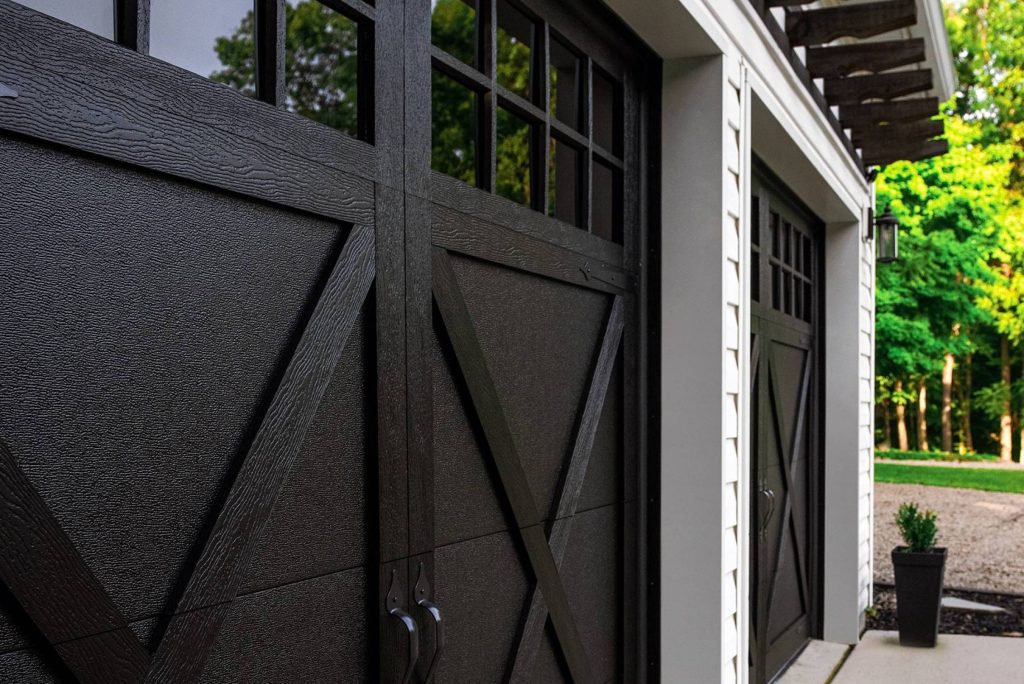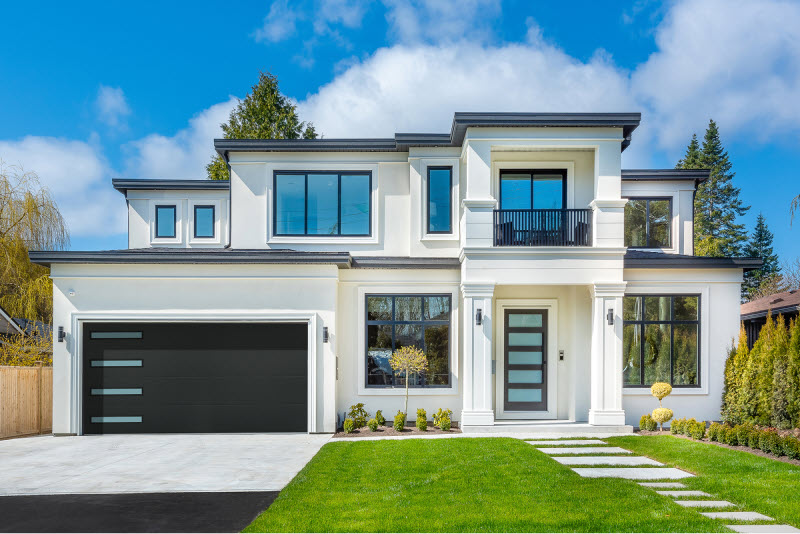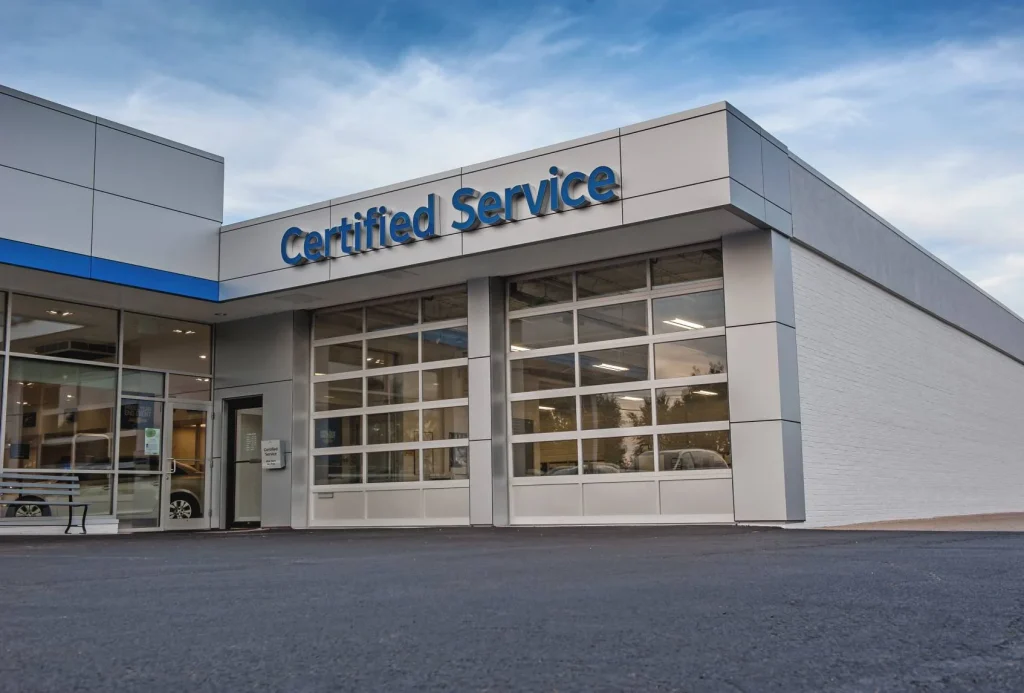Premium Commercial Metal Entry Doors in Hazel Park, MI
Affordable, Secure Access for Warehouses and Facilities
Locally Based, Regionally Trusted
Since 2017
Schedule A Service Request
We Serve Businesses In And Around The Following Cities:
About Commercial Metal Entry Doors
Comprehensive Guide to Commercial Metal Entry Doors for Hazel Park Businesses
A Modern Choice for Security and Style
In Hazel Park, commercial properties are increasingly recognizing the importance of strong, durable, and visually appealing entry points. Commercial metal entry doors offer an outstanding solution for local businesses seeking a blend of security and style. These doors are not merely functional; they serve as the first impression customers receive of a business. Whether you're a retail store, office building, or industrial facility, enhancing your entrance with metal doors can significantly impact your property's aesthetic and operational efficiency.
Understanding Metal Entry Doors
Commercial metal entry doors are crafted to withstand the challenges of daily use, offering unparalleled resilience compared to other materials. They come in various types, including steel, aluminum, and other alloys, each boasting unique properties that cater to different needs. Unlike typical wood or glass doors, metal doors offer superior resistance to environmental elements and potential intrusions, making them an investment in safety and longevity.
The metal used in these doors can be customized to match the property's design ethos, from sleek, modern finishes to classic, rustic appearances. Besides being a reliable security measure, they establish an inviting and professional look, a vital aspect for businesses aiming to attract and retain customers in Hazel Park.
The Installation Process: What to Expect
Installing commercial metal entry doors is a straightforward process, yet it requires expert professionals to ensure optimal results. Initially, a thorough site assessment is conducted to understand the specific requirements of your property. Factors such as door size, swing direction, and additional features like automatic openers or security systems are determined during this stage.
Once the specifications are confirmed, custom fabrication may occur to ensure that the door fits perfectly within the existing structural constraints. Professionals from companies like D&J Contracting take over the installation, where precision and adherence to safety standards are paramount. The removal of the old door, preparation of the frame, and fitting the new metal door are all handled with minimal disruption to the business operations. The careful calibration ensures that the doors operate smoothly and securely, providing a long-lasting solution.
Benefits of Commercial Metal Entry Doors
The advantages of installing commercial metal entry doors in Hazel Park businesses are manifold. One of the primary benefits is enhanced security. Metal doors are difficult to breach, acting as a deterrent against break-ins. Their robust construction withstands force and adverse weather conditions, ensuring the safety of the goods and personnel inside.
Beyond security, metal doors offer excellent insulation properties. This feature helps maintain energy efficiency by keeping the premises warm in winter and cool during summer, ultimately reducing utility costs. Moreover, these doors require minimal maintenance. Their resistance to rust, rot, and warping means they maintain their functionality and appearance with minimal upkeep requirements.
Incorporating these doors into your commercial property can significantly boost its value. Prospective buyers or tenants often seek properties with well-installed infrastructure and a secure environment, making metal entry doors a smart addition to any commercial building's portfolio.
Real-World Applications and Examples
Consider the bustling business districts in Hazel Park, where shop owners commonly face the dual challenge of securing their premises while drawing in foot traffic. A local coffee shop, for instance, upgraded to metal roller doors. These not only reinforced security during off-hours but also allowed the storefront to open effortlessly during business hours, inviting in customers and improving curb appeal.
In industrial settings, metal roll up doors and metal shop roll up doors offer flexible access solutions. They are ideal for spaces needing large entryways to accommodate equipment and shipments but still require reliable security when closed. These doors also come in variations with insulated panels for further energy savings and noise reduction.
Another Hazel Park retail store utilized metal roll up doors for sale from D&J Contracting to replace aging wooden doors. This transition not only enhanced security but also refreshed the store's appearance, drawing attention from both existing and potential customers. Such real-world examples illustrate the adaptability and benefits of metal entry doors in diverse commercial applications.
Design and Aesthetics
Modern metal entry doors are not limited to block-like, utilitarian designs. Advances in production techniques mean businesses can select from various textures, colors, and finishes to capture the essence of their brand identity. Contemporary designs often feature sleek lines and polished finishes that seamlessly integrate with modern architectural trends, while more traditional wrought iron patterns provide a classic touch.
For businesses looking to make a statement, custom engraving and branding are options that add a unique, personalized touch. These elements not only enhance the aesthetic appeal but also strengthen brand recognition, making your entrance both functional and a talking point among clients and visitors.
Cost Considerations
When deliberating on the costs associated with commercial metal entry doors, it's essential to consider the long-term savings they offer. While the initial investment may be higher than alternative materials, the durability and minimal maintenance required can lead to significant savings over time. The longevity and reduced risk of damage negate frequent replacement costs, providing a sound return on investment.
Additionally, the energy savings and potential insurance discounts (due to enhanced security features) contribute to reducing the overall costs involved with property upkeep. Hazel Park businesses can leverage these financial benefits, justifying the upfront cost with clear, long-term advantages.
Potential Challenges and Solutions
Like any architectural feature, metal entry doors may pose challenges. Weight, for instance, can be a concern, especially in older buildings where structural integrity must be evaluated beforehand. Engaging experienced professionals from D&J Contracting can mitigate such issues, ensuring proper assessment and installation to accommodate any structural variances.
Another challenge might be syncing additional features like keypads, card readers, or automatic systems with the doors. However, modern technological integration means that these operations can be seamlessly integrated, enhancing both convenience and security without residual complications.
The aesthetic alignment with your existing design might also require consideration. However, customizable options available today allow for the incorporation of various styles, ensuring the new installations complement and enhance your existing architecture.
Emphasizing Professional Installation
The value of hiring professionals for the installation of commercial metal entry doors cannot be overstated. With companies like D&J Contracting, business owners in Hazel Park are assured not just of quality products, but also of reliable installation services that adhere to regional building codes and standards.
These organizations provide experts who understand the nuances and specific requirements of different commercial settings, ensuring that the installation process is smooth, efficient, and tailored to your business's unique needs. Such expertise guarantees that your investment in metal entry doors is capitalized fully, providing peace of mind along with practical benefits.
The knowledge and experience of these professionals mean they are able to quickly troubleshoot and resolve any issues that may arise during installation, providing ongoing support and ensuring that the doors meet all functional expectations.
Final Reflection and Recommendations
In a city like Hazel Park, where commercial properties are as diverse as the businesses operating within them, the choice of entry doors carries significant weight. Commercial metal entry doors represent a strategic investment that enhances security, efficiency, and appeal. They are resilient and customizable, meeting both practical and aesthetic demands with ease.
For local business owners contemplating such an upgrade, consulting with experts, such as those at D&J Contracting, can offer valuable insights and quality assurance. With the right guidance and installation, these doors can elevate the entire premises, providing an entryway that welcomes customers while safeguarding assets. By focusing on a thoughtful blend of practicality, design, and durability, metal entry doors offer a superior solution that aligns seamlessly with the vibrant business landscape of Hazel Park.
Commercial Metal Entry Doors Gallery



Call Us Today to receive your Free Quote for Commercial Metal Entry Doors in Hazel Park
Serving: Hazel Park, Michigan

About Hazel Park, Michigan
This area was long occupied by indigenous peoples, with such historic and current tribes as the Potawatomi and others known to European fur traders and colonists from the 17th century.
In the later 19th century, as westward migration increased from the eastern United States to the Great Lakes territories, this area was settled by European Americans. They first developed it for agriculture. In October 1882, a group of farmers gathered to organize the community's first school. They built a one-room school in 1883 and later expanded it to two rooms. In 1884, John W. Benjamine petitioned the state of Michigan to form a school district from Royal Oak Township. Benjamine, who was School Inspector for Royal Oak Township, named it Hazel Park School District 8, after the abundant hazelnut bushes in the area.
In 1920, the Thomas W. Lacey School, was built on present-day Woodruff Avenue. The first Hazel Park school had been sold to Frank Neusius, who used it as a barber shop and neighborhood grocery.
Given a rapid increase in this period of the number of school-age children as population grew, the school district soon added four grade schools. It built a larger building at the central location, also called the Lacey School. This became the site for high school students. With further postwar population growth, Hazel Park High School was built. The former high school at John R and 9 Mile Roads was used as Lacey Junior High School.
Hazel Park's growth was stimulated by the expansion of jobs at the Ford Motor Company, based in nearby Highland Park. Hospitals, offices and shops were developed in the area of 9 Mile Road. The electric Stephenson Line was a convenient way for commuters to travel by trolley to Highland Park and Detroit. In 1924, Hazel Park installed its first traffic light, was granted a post office, and established a Deputy Sheriff's office. The city was incorporated in 1941.
During the 1930s and 1940s, rallies and community events helped the city during the Great Depression and the years of World War II. Large parts of the auto industry were converted to production of defense-related goods, and thousands of people migrated into the area for new jobs. After the city's incorporation, it improved the infrastructure and provided running water to all areas.
In 1942, the Elias Brothers, John, Fred and Louis Elias, established a diner in Hazel Park. The Dixie Drive-In was one of the first in the Midwest to offer curbside services. In 1952, the diner was franchised as a Big Boy restaurant. Louis Elias was elected as Mayor of Hazel Park, serving two terms from 1953 to 1961. The Elias brothers continued to open Big Boy restaurants throughout the Metro Detroit area and in 1983 purchased the franchiser.
With the return of thousands of soldiers from World War II, housing demand was very high in the area. It stimulated a boom in construction. Many of the current bungalows in the city were built shortly after the war.
Hazel Park Raceway opened for thoroughbred horse racing in 1949. It was considered a state-of-the-art facility. Harness racing was added in 1953. In 1950 the Detroit Race Course opened in Livonia, Michigan, to the north of Detroit, offering competition with both flat and harness racing. In 1996 the state legislature approved onsite betting at racetracks for simulcast events, and the track was opened year round for patrons to view on racing events from across North America. In 2018 the profitable Hazel Park track was closed after being sold. The new owner wanted to use the large property to develop new warehouse space for an Amazon distribution center.
In 1966 the Interstate 75 (I-75) freeway was fully completed through Hazel Park, as part of the postwar highway construction subsidized by the federal government. It superseded Stephenson Highway, now used as a service drive. Similarly, I-696 was constructed through the neighboring city of Madison Heights in 1979; it joins the two freeways and creating a busy junction with I-75, part of which extends into Hazel Park's north end.
According to the United States Census Bureau, the city has a total area of 2.82 square miles (7.30 km), all land.
Hazel Park is adjacent to the cities of Detroit to the south, Ferndale to the west, Royal Oak to the northwest, Madison Heights to the north, and Warren to the east. The city is bordered by 10 Mile Road to the north, I-696 at its northwest corner, Dequindre Road (the Oakland-Macomb county line) to the east, 8 Mile Road (M-102) to the south, and West End Street, Pilgrim Avenue, and Lenox Street to the west.
| Census | Pop. | Note | %± |
|---|---|---|---|
| 1950 | 17,770 | — | |
| 1960 | 25,631 | 44.2% | |
| 1970 | 23,784 | −7.2% | |
| 1980 | 20,914 | −12.1% | |
| 1990 | 20,051 | −4.1% | |
| 2000 | 18,963 | −5.4% | |
| 2010 | 16,422 | −13.4% | |
| 2020 | 14,983 | −8.8% | |
| source: | |||
| Year | $ | ±% |
|---|---|---|
| 1990 | 35,667 | — |
| 1997 | 39,118 | +9.7% |
| 2000 | 37,045 | −5.3% |
| 2005 | 38,300 | +3.4% |
| 2007 | 39,783 | +3.9% |
| 2009 | 40,403 | +1.6% |
The median income for a household in the city in 2008 was $40,403, and the median income for a family was $49,448. The per capita income for the city was $19,390. About 10.0% of families and 12.4% of the population were below the poverty line, including 17.0% of those under age 18 and 7.6% of those age 65 or older.
As of the census of 2010, there were 16,422 people, 6,641 households, and 3,999 families residing in the city. The population density was 5,823.4 inhabitants per square mile (2,248.4/km). There were 7,611 housing units at an average density of 2,698.9 per square mile (1,042.1/km). The racial makeup of the city was 85.8% White, 6.8% African American, 0.9% Native American, 0.5% Asian, 0.4% from other races, and 4.6% from two or more races. Hispanic or Latino residents of any race were 2.7% of the population.
There were 6,641 households, of which 31.8% had children under the age of 18 living with them, 33.7% were married couples living together, 18.9% had a female householder with no husband present, 7.6% had a male householder with no wife present, and 39.8% were non-families. 32.2% of all households were made up of individuals, and 11.3% had someone living alone who was 65 years of age or older. The average household size was 2.47 and the average family size was 3.13.
The median age in the city was 36.1 years. 24.2% of residents were under the age of 18; 9.3% were between the ages of 18 and 24; 29.5% were from 25 to 44; 25.6% were from 45 to 64; and 11.3% were 65 years of age or older. The gender makeup of the city was 49.4% male and 50.6% female.
In 2000, there were 7,284 households, out of which 33.4% had children under the age of 18 living with them, 41.6% were married couples living together, 16.1% had a female householder with no husband present, and 35.9% were non-families. 28.4% of all households were made up of individuals, and 11.1% had someone living alone who was 65 years of age or older. The average household size was 2.60 and the average family size was 3.21.
In the city, 27.7% of the population was under the age of 18, 9.5% was from 18 to 24, 33.2% from 25 to 44, 18.1% from 45 to 64, and 11.5% was 65 years of age or older. The median age was 33 years. For every 100 females, there were 97.3 males. For every 100 females age 18 and over, there were 94.0 males.
73.1% of all households in Hazel Park were family households. 20.9% of all households were married couple families with children. 10.6% were single-mother families.
The census reported the city as 81.1% White, 9.7% African American, 0.90% Native American, 1.5% Asian, 0.90% from other races, and 4.20% from two or more races. Hispanic or Latino residents of any race were 2.7% of the population.
The top reported ancestries in the city were German (18.6%), Irish (14.8%), Polish (10.3%), English (9.7%), French (6.0%) and Italian (4.1%) Italian. French Canadians (3.6%), Scottish (3%), Arab (2.5%) and Dutch (1.6%). The city has the second-largest proportion of Native American residents in Oakland County, after Keego Harbor.
In 2000, 7.2% of Hazel Park citizens were foreign born. 9.7% reported speaking a language other than English.
As of the 2000 Census, the median income for a household in the city was $37,045, and the median income for a family was $43,584. Males had a median income of $33,063 versus $24,362 for females. The per capita income for the city was $16,723.
Hazel Park has a Council-Manager form of government. It is governed by an elected City Council consisting of a mayor and four council members. The city council appoints a City Manager, who manages the day-to-day operations of the city. The current mayor of Hazel Park is Michael Webb, who succeeded Jeffrey Keeton. Jan Parisi, the city's first woman mayor, resigned in 2016 due to health-and family-related reasons.
Current city council members are Alissa Sullivan, who also serves as Mayor Pro Tem, Andy LeCureaux, Luke Londo, and Mike McFall. The current city manager is Edward Klobucher. City government is located on the same block as the public library, police station, and post office, at 9 Mile Road and John R Road.
The Hazel Park Police Department has a force of 42 full-time police officers. The department has auxiliary policing and neighborhood watch programs available to citizens ages 21 and over. The police department offers programs such as gun lock giveaways, house watch programs, and programs to put a child up for adoption in case the parent is not capable of raising the child.
| District | Representative | Party | Since |
|---|---|---|---|
| 11th | Haley Stevens | Democratic | 2023 |
| District | Senator | Party | Since |
|---|---|---|---|
| 3rd | Stephanie Chang | Democratic | 2023 |
| District | Representative | Party | Since |
|---|---|---|---|
| 8th | Mike McFall | Democratic | 2023 |
| District | Commissioner | Party | Since |
|---|---|---|---|
| 3 | Ann Erickson Gault | Democratic | 2023 |
The city is served by the Hazel Park School District, which has some establishments in Ferndale, a neighboring city. There are three elementary schools operating in the city of Hazel Park.
The northern portion of the city is served by Webb Elementary, while the southern portion is served by United Oaks Elementary and Hoover Elementary. Multiple other elementary schools once operated in the city, including Roosevelt, Lee O. Clark, Longfellow, Henry Ford, Webster, and Edison Elementaries. Webster was closed as an elementary school at the end of the 2014 school year, but remains open for the Preschool program. Lee O. Clark has since been demolished, and Henry Ford has been converted into the School District Administration Building. Henry Ford also serves as an alternative education facility for students K-8 called Advantage, and a program called Breakfast Club for high school students. There is one high school and one middle school operating in Hazel Park. Hazel Park has followed a recent trend in Metro Detroit suburbs by the consolidation of its middle schools. Formerly, two separate schools, Webb Junior High and Beecher Middle School, operated in the city. Webb was converted to an elementary school in 2004, and Beecher was torn down and re-built, commissioned as Hazel Park Junior High.
High schools in Hazel Park began with the construction of Lacey High School in 1920 and Hazel Park High School in 1929. Lacey High was demolished in the early 1960s, and the Hazel Park High School was re-commissioned as Howard Beecher Junior High. In 1961, a new high school was built in the eastern portion of the city, taking the name of Hazel Park High School.
Jardon Vocational School is also in operation in order to separate special needs students from the mainstream curriculum and serves as a high school. The school operates mainly in the Hazel Park-Ferndale-Pleasant Ridge area, but also serves the rest of Oakland County, especially the south east.
The high school had an average score of 10.3 on the state's MEAP test in 2011. This was one of the lowest scores in Oakland County.
